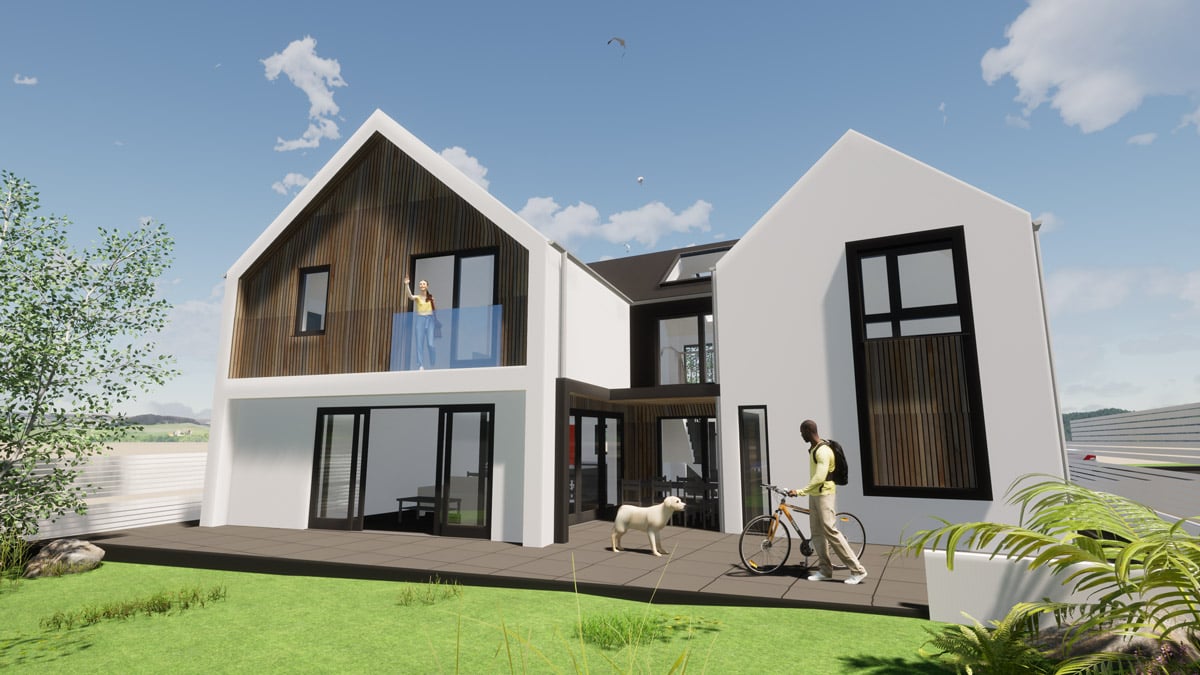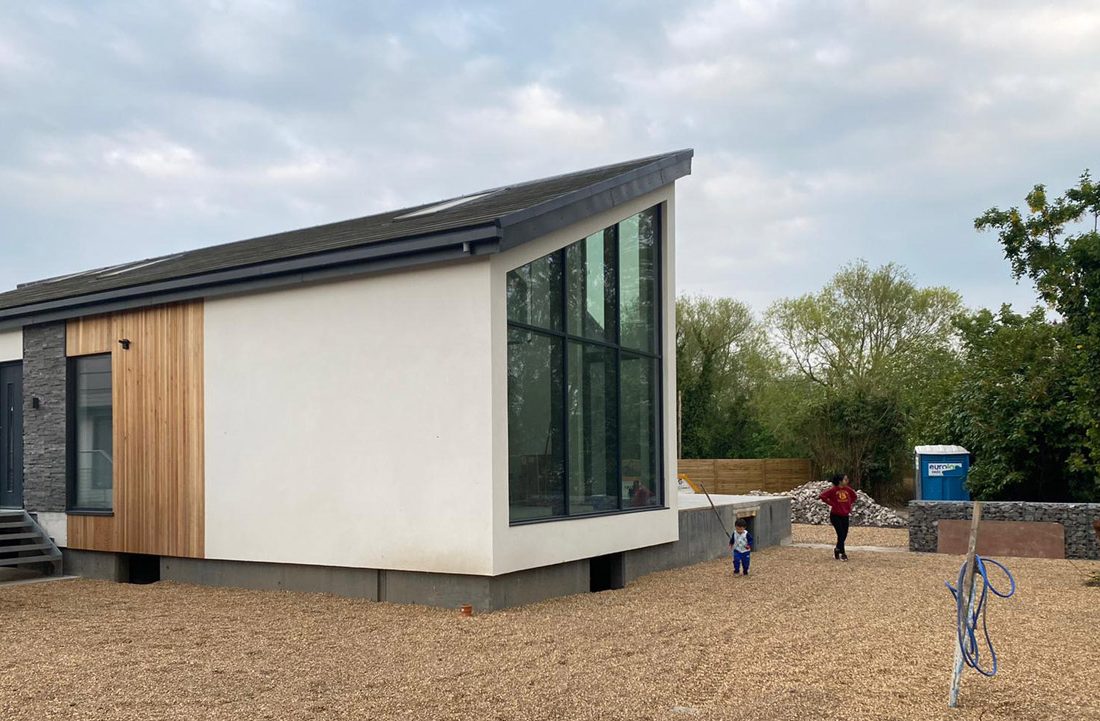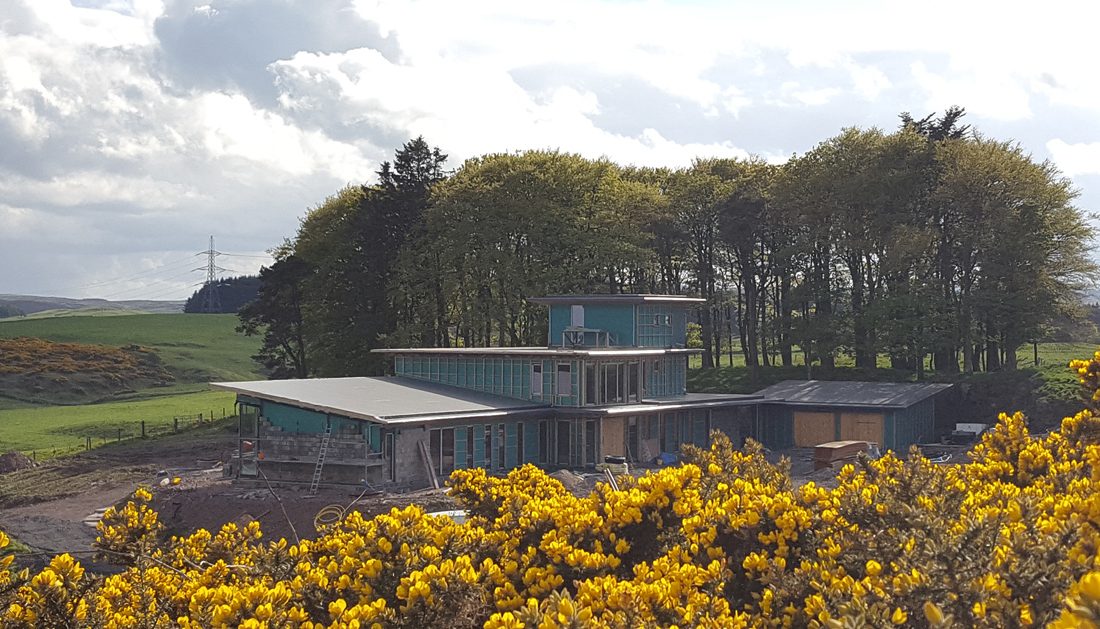Ever since we realised that nuclear energy was not going to provide abundantly, low-cost energy electric heating has been considered a daft idea. The shocking low-efficiency of fossil-fuelled power stations (less than 30% of the potential energy that goes into a gas or coal-fired power station arrives at the plug socket in your house) lead to a high unit cost of electricity and, more latterly, a growing awareness of the impact of power stations on the environment.
The worst culprit was the coal-fired power station with its massive CO2 emissions. There are now only three left, and they are all scheduled for closure. Rather than putting oil and gas into a power station, it made more sense to burn that fuel in our own boiler and get over 90% efficiency. But, as always, things are changing.
In case you missed the previous articles of the Eco Series with Tim, here they are:

Prices of electricity have continued to rise, but the increase in nuclear power, wind and solar farms have driven the CO2 burden of grid electricity down to a point where it is now better than oil or gas (down from 750g/kWh in 1970 to 233g/kWh in 2018). Also, the lower energy demands of thermally efficient homes make an increasingly strong argument in favour of the all-electric house. The issue of running costs remains, and there are a number of ways of addressing it.
POWER
Since the 1930s, the average amount of electricity consumed in the UK house has increased yearly, at a fairly steady 4% year-on-year. Until 2004 when it started to fall. This trend continues despite the proliferation of electrical goods. That saving is due almost entirely to manufacturers making those goods more efficient, not to the homeowner’s activity.
Sales of domestic appliances is rising by a steady 1.5% year-on-year, and we still seem to struggle with the idea of switching stuff off.
Installing energy-efficient appliances is a good start, but there are other things we can do to minimise electricity consumption. Install LED lamps, use power-down or smart sockets to switch off appliances that are not being used (these cost £5 to £25 although some of the big electricity suppliers – like EON – are offering them for free).
We can also install a solar PV array with a battery. Smart meters are also said to help, perhaps simply by focusing our attention on how much electricity we use and what we are using it on.
The big issue for the all-electric house is heat; for space heating and hot water. A 250m2 floor area house built to 2000 building regulations would need around 18,000kWh of space heating energy. That same house built to current standards would require little more than half of that energy.
At Passivhaus standard, the space heating demand drops below 4,000kWh per year. The key to affordable running costs for the all-electric house builder is to invest in insulation and airtightness.
The unit cost of electricity (the price per kWh) is undeniably higher than other fuels, but that does not necessarily mean that the total running cost of the house will be higher too.
Providing space heating and hot water to that building regulations standard house via a gas boiler is likely to cost around £720 per year (assuming 90% efficiency in the boiler and a unit cost for gas of 5.4p/kWh, including VAT and standing charges) compared to £548 for an air source heat pump (assuming 350% efficiency and a unit cost of electricity of 16p/kWh including VAT and standing charges.
However, the heat pump will likely last twice as long as the boiler. There will be no gas connection fee and no standing charges for gas. These all make a compelling economic case for electricity to provide the heat source.
The amount of hot water needed for hygiene purposes is likely to remain the same for the family, whatever the thermal efficiency of the house. It is a matter of personal choice – a power shower uses more hot water than a standard shower, and a bath uses more than a power shower.
It is possible to heat that water with the heat pump or an immersion heater, but that would be inefficient and expensive. The smart householder will have a good hot water cylinder (a thermal store) and use immersion heaters on overnight electricity (Economy 7 or White Meter). This will heat enough water to see the family through the day at roughly half the cost of peak-time electricity. The heat pump can then be used to top-up any shortfall.

CONTROL
Over recent years, controlling heating systems has become increasingly sophisticated, allowing the determination of the timing and temperature of heating to every room.
We now also have remote control apps allowing us to adjust the heating from the comfort of the lounge bar in the local pub. What remains a problem for conventional heating systems is increasing the temperature in a single room by a degree or two. Firing up a boiler or heat pump will be wastefully inefficient as well as taking time to be effective.
Switching on an electric heater, an infrared heating panel, for instance, has an almost immediate effect and allows the rest of the house to be run at a lower and more efficient temperature. The same could be said for the bioethanol stove. Although not electric, it would also quickly warm a room and provide the focal point.
ON-SITE GENERATION
Generating as much of your own energy as possible is a good idea for the all-electric homeowner. The reality of most domestic situations is that solar PV is likely to be limited to around 4kWp capacity and will need a battery to maximise its value.
The capital cost of such a system is likely to be around £8,000 giving a unit cost of around 13p/kWh over 20 years, which will not be subject to price rises.
The average price of grid electricity is 15p/kWh (including VAT and standing charges) and rising, which means that generating your own electricity is a good idea, but not essential.

OPTIONS TO HEAT PUMPS
Infrared Panels
These use infrared energy to heat objects instead of convection to warm the air in the room, as radiators and UFH do. Infrared energy causes the atoms of an object or person to vibrate and become warm, but the room’s air is heated by radiation from those people and objects.
This means that the room tends to get cold again very quickly when the panel is switched off. It’s like standing in a sheltered sunny spot on a cold day. You feel warm until you move out of the sun.
Prices of infrared panels vary with size and quality, from around £100 for a 180W panel to almost £400 for a top of the range 800W panel. Installation is easy and cheap – DIY level – and they are now available as mirrors and decorative panels.
As a top-up heating option, infrared panels have a lot going for them, but they are unlikely to be considered a sole or principal heat source.
Storage heaters use low cost (and low carbon) overnight electricity to heat ceramic blocks, held in an insulated container until needed. Modern storage heaters allow greater control over when heat is emitted and the temperature in the room than was once the case, and some even have fans and resistance heaters to speed up the heating.
At £300 to £500 each, the price of storage heaters is relatively high, but the installation cost is very low, and the finished system cost will be very similar to a radiator system.
In the right situation (where there is little daytime heat demand) and used in the right way, night storage heaters can be an effective and eco-sensitive option. They are largely maintenance-free and last for decades, but the big drawback is that if the stored heat has been used throughout the day, keeping the house warm through the evening can be very expensive.

ELECTRIC BOILERS
An electric boiler is essentially a big immersion heater and can be considered a direct replacement to a gas or oil boiler. At £200 to £600, they are cheaper than gas boilers and easier to install as there is no gas connection and no flue. They are expensive to run, but for a small property – a single bedroom flat, for instance – or as back-up to the principal heat source, using an electric boiler to heat a water tank at overnight tariff could be a practical option.
ELECTRIC UNDERFLOOR HEATING
Electric UFH has been with us for a long time but suffers from high running costs and relatively slow warm-up time. Its principal advantage over wet UFH is the low installation cost. It is generally used for extensions and room changes, where using wet UFH is not practical or possible.
The new kid on the block is Lamina Heat ComfortFilm, carbon fibre mesh less than 2mm thick that goes directly below the floor finish. This is a very new product – said to be at the “early adopter” stage – and prices were not available at the time of writing.
But it seems to have the ability to be a game-changer for very low heat demand houses (Passivhaus, for instance). Where the heat demand is small and intermittent, the high running cost would be more than off-set by the effortless installation, speedy warm-up time, and maintenance-free and long-lasting.

CONCLUSION
The ongoing improvements to thermal efficiency and falling carbon intensity of grid electricity have made the all-electric house a sensible and viable option.
The government’s drive to meet our decarbonisation goals, with the ban on fossil fuel heating in new homes from 2025, means that it is almost an inevitability.
There is talk of decarbonising the gas grid by using hydrogen and/or biogas, but that is still some distance from being a reality, and that, at the moment, leaves no alternative.
The question for anyone at the planning stage of their house building project is whether to install a boiler or accept the direction of travel and design an all-electric house?
We would like to thank Tim for sharing his expertise on our blog. If you would like to ask Tim a specific question about your low energy home, then leave a comment below and we will pass it on!





